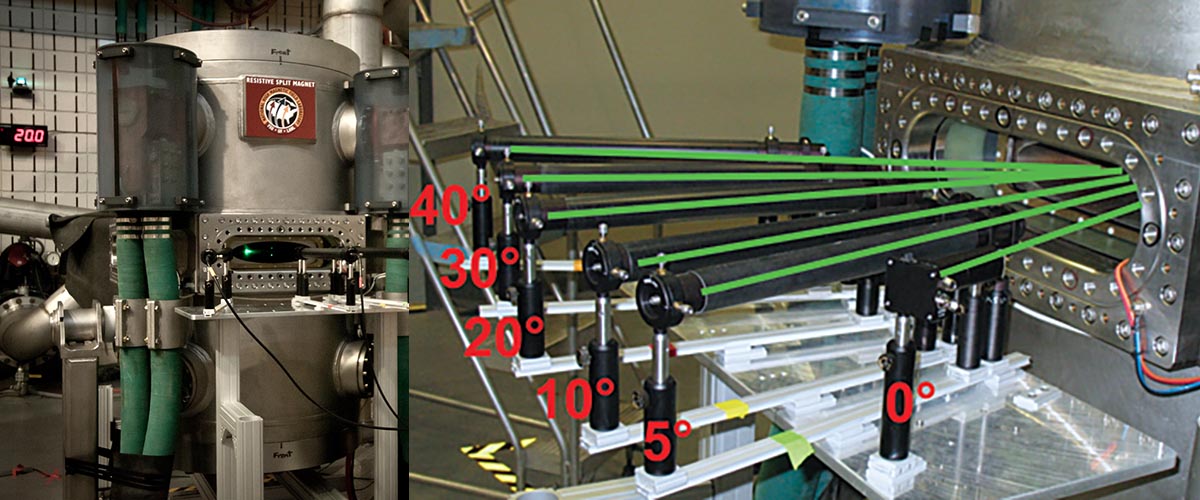
This world-unique magnet system with four ports required a complete rethinking of resistive magnet technology’s limits and some new inventions.
The centerpiece of this Split magnet is a group of four elliptical scattering ports to enable never-before-possible optics experiments.
To meet this magnet’s considerable design challenges, new magnet technology - Split Florida-Helix technology - had to be invented. Consisting of five resistive coils, the first two innermost coils are electrically connected in parallel and three outer coils are connected in series. All resistive magnets previously developed at the MagLab were solenoids, however, in the 25 T Split, more than half the midplane region is missing to provide the vacuum space for scattering.
So how did MagLab engineers build a magnet that everyone said was impossible?
When electricity is conducted through a metal coil, or helix, it creates a strong magnetic field. All of our electromagnets are built on this very simple idea.
The Split magnet uses Florida-Bitter plates to create helixes. We stacked thousands of these plates inside the Split. Then we nestled several stacks (like a Russian doll) to increase magnetic field strength.
But we couldn’t use bitter plates in the places where the access ports poked, so our scientists & engineers specially invented the Split Florida-helix to accommodate the four ports going through the middle of the Split. Machining the space around the elliptical ports turned out to be so complicated that the lab was unable to find a commercial vendor who’d agree to do the job. so we built the unbuildable parts in-house.
The 25 T Split magnet allows special optics experiments. Scientists learn more about the intrinsic properties of materials by shining light on them. Looking at which kinds of light are absorbed or reflected at different angles gives researchers insight into the fundamental electronic structure of matter, and that’s the kind of stuff that over decades has led to smaller and faster computers, and other quality-of-life enhancements.
In addition to optics experiments, this magnet is also useful for Fourier transform infrared resonance, electron magnetic resonance, and x-ray experiments. To keep the magnet as responsive as possible to different experimental approaches, the entire magnet can rotate 90 degrees, making the magnetic field parallel to the floor.
Learn more about the 25 T Split or request magnet time on this unique instrument.
| Strength | 25 tesla |
| Type | Split Resistive |
| Bore size | 32 mm (~1.25 inches) |
| Port size | 45° by 11.4° |
| Individual parts | 18,236 (including 5,000 bitter plates) |
| Online since | June 2011 |
| Cost | $2.5 million |
| Weight | 5,778 kg (or 12,739 lbs - as much as a female African elephant) |
| Height | 2.1 meters (7 feet) |
| Power required | 28 MW (second only to the Hybrid) |
Last modified on 31 December 2022